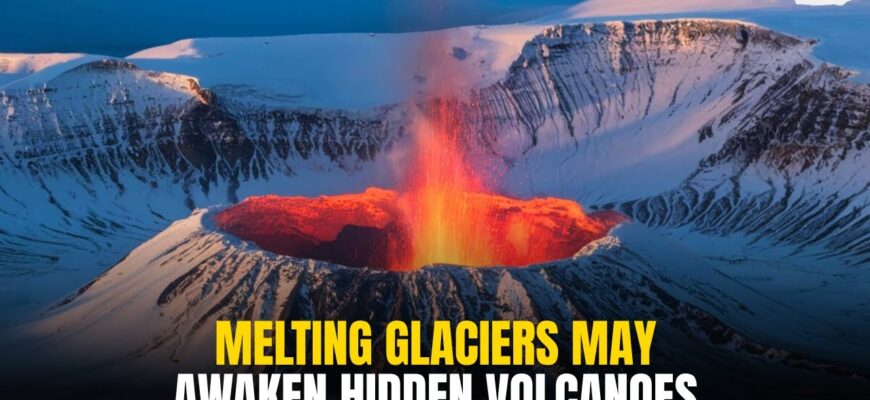Climate change presents a multitude of challenges, from rising sea levels and intensifying heatwaves to altered weather patterns. However, new scientific research points to a less immediately obvious, yet potentially explosive, consequence: the melting of glaciers, driven by a warming planet, could significantly increase the risk of powerful volcanic eruptions.
This striking finding was presented at the recent Goldschmidt conference, a major international event in geochemistry. Researchers have been exploring the complex interactions between Earth`s systems, and this study highlights a surprising link between retreating ice masses and the fiery activity hidden beneath the surface.
How could the disappearance of ice trigger volcanoes? The mechanism described is rooted in pressure. Imagine the immense weight of a colossal glacier resting atop a volcanic mountain. That mass exerts significant pressure on the underlying rock and the magma chambers deep within the Earth`s crust. This pressure helps to keep dissolved gases within the magma under control.
As global temperatures rise and these massive glaciers melt and retreat, the immense load they impose on the land is gradually removed. This reduction in external pressure allows gases that were dissolved under high pressure within the magma to expand more readily and rapidly. Think of opening a bottle of fizzy drink: the pressure inside keeps the gas dissolved until you remove the cap, allowing it to escape violently. In a volcano, this rapid gas expansion is a primary driver of explosive eruptions.
This isn`t purely theoretical. The research backing this up comes from a detailed study of six volcanoes in the southern Andes region of Chile, including the currently dormant Mocho-Choshuenco. Researchers from the University of Wisconsin-Madison analyzed volcanic rocks, using techniques like argon dating and examining the composition of crystals formed during past eruptions.
Their analysis revealed a compelling pattern. Periods when the region was covered by massive ice sheets during past glaciations appeared to correlate with phases of reduced volcanic activity. Conversely, as these vast glaciers retreated following the end of ice ages, the data showed a marked increase in the frequency and power of explosive eruptions. It strongly suggests that the removal of the glacial weight acted as a trigger, allowing the pent-up energy within the magma to be released in dramatic fashion.
While the study focused on a specific region in Chile, the implications are far-reaching. Many active or potentially active volcanic regions around the world are currently experiencing rapid glacier melt or were covered by significant ice masses in the past. These include areas ranging from Antarctica and New Zealand to parts of Russia and North America. The same pressure-release mechanism observed in the Andes could potentially operate in these diverse geographical locations, raising the prospect of increased volcanic risk globally as the planet warms.
Adding a layer of rather unwelcome irony to the situation, an increase in powerful volcanic eruptions could, in turn, contribute to the very climate change that potentially triggered them. Major eruptions release significant quantities of greenhouse gases, creating a potential feedback loop where a warming climate leads to more eruptions, which then release more gases, further contributing to warming. A truly inconvenient cycle.
This potential volcanic threat joins a growing list of serious consequences from the ongoing loss of global ice. Scientists have previously issued grave warnings about the rapid disappearance of mountain glaciers and snowpack, highlighting that these natural reservoirs are crucial for providing water. Their decline already threatens the food and water security of billions of people worldwide, impacting vital rivers and reservoirs.
The newly identified connection between retreating ice and potential volcanic unrest underscores the intricate and sometimes surprising ways in which climate change can influence Earth`s complex systems. It serves as a powerful reminder that the impacts of our warming planet extend far beyond simple temperature increases, potentially influencing the stability of the very ground beneath our feet.









